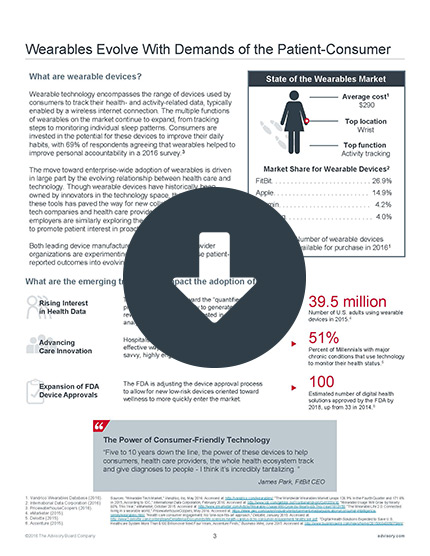Identifying John and Jane Doe patients when they arrive at the hospital can be a high-stakes game of detective for hospital staff, Susan Abram reports Kaiser Health News/NPR's "Shots."
The typical John or Jane Doe
Typically, unidentified patients that arrive at hospitals are pedestrians or cyclists who left their house without their ID, Abram reports. Other common reasons people end up in the hospital as unidentified patients include cognitive impairment, psychosis, or drug overdoses.
Unidentified patients are more than just a logistical challenge.
When patients are unidentified, providers have no access to their medical history, which places patients at risk for treatment issues, such unknown medication allergies or pre-existing conditions.
For hospitals, reimbursement is also at stake. The hospital needs the patient's name to submit a bill to receive reimbursement from private and federal insurers.
The detective work
To identify patients, social workers at LA County+USC Medical Center have to do a bit of sleuthing, Abram reports.
Social workers might begin by looking through a patient's bags and clothing in hopes of finding an unlocked phone, Abram reports. Receipts and other scraps of paper might provide clues. Other potential sources of information include the paramedics who brought the patient in and the dispatchers who took the call.
Christopher Lake, executive director of community resilience at the Nevada Hospital Association, noted hospital staff also look for distinguishing features, such as a tattoo or scar, and try to cross-reference with social media.
At LA County+USC, when a patient goes unidentified for a certain amount of time, staff will give the patient an alias that begins with an M or F for their gender, followed by a number and a random name, according to Jan Crary, supervising clinical social worker at LA County+USC.
Hospitals elsewhere use similar protocols, Abram reports.
How patient privacy can pose a barrier to identification
In some cases, the unknown patient's family or police helping to locate the individual may reach out to the hospital, but federal patient privacy law can prevent hospitals from releasing information about unidentified patients, Abram reports.
The issue gained attention in 2016, when a man with Alzheimer's disease was admitted to a New York hospital as an unidentified person, or "Trauma XXX." The hospital received inquiries from the man's family and police but told them the man was not there.
A week later, a doctor who worked at the hospital saw a news story about the man and realized he was the hospital's unidentified patient.
Hospital officials later explained to the man's son that they had been unable to give him information that could have helped identify the patient because he had not specifically asked for the patient by the "Trauma XXX" name the hospital had assigned the patient.
How can hospitals cooperate with missing person inquiries?
Some states have established guidelines to help hospitals with unidentified patients cooperate with missing person inquiries, Abram reports.
For example, after the incident in New York, the New York State Missing Persons Clearinghouse released guidelines that list about two dozen steps hospitals can take if they receive inquiries about missing persons. The guidelines include steps such as informing the front desk, adding detailed physical descriptions into a database, taking DNA samples, and monitoring emails and faxes about missing persons.
In California, guidelines state that if an unidentified patient is cognitively incapacitated, "the hospital may disclose only the minimum necessary information that is directly relevant to locating a patient's next-of-kin, if doing so is in the best interest of the patient" (Abram, "Shots," Kaiser Health News/NPR, 5/7).
Your cheat sheets for understanding health care's legal landscape
To help you keep up with the ever-changing regulatory environment, we recently updated our cheat sheets on some of the most important—and complicated—legal landmarks to include a brand new one-pager on the new tax law.
Check out the cheat sheets now for everything you need to know about MACRA, the Affordable Care Act, antitrust laws, fraud and abuse prevention measures, HIPAA, and the two-midnight rule.
Don't miss out on the latest Advisory Board insights
Create your free account to access 1 resource, including the latest research and webinars.
Want access without creating an account?
You have 1 free members-only resource remaining this month.
1 free members-only resources remaining
1 free members-only resources remaining
You've reached your limit of free insights
Become a member to access all of Advisory Board's resources, events, and experts
Never miss out on the latest innovative health care content tailored to you.
Benefits include:
You've reached your limit of free insights
Become a member to access all of Advisory Board's resources, events, and experts
Never miss out on the latest innovative health care content tailored to you.
Benefits include:
This content is available through your Curated Research partnership with Advisory Board. Click on ‘view this resource’ to read the full piece
Email ask@advisory.com to learn more
Click on ‘Become a Member’ to learn about the benefits of a Full-Access partnership with Advisory Board
Never miss out on the latest innovative health care content tailored to you.
Benefits Include:
This is for members only. Learn more.
Click on ‘Become a Member’ to learn about the benefits of a Full-Access partnership with Advisory Board
Never miss out on the latest innovative health care content tailored to you.

